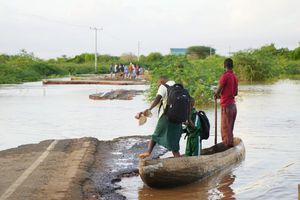How to improve the quality of Kenya's varsities

Webometrics 2019 ranking of world universities ranks the University of Nairobi as the first in Kenya. PHOTO | FILE | NATION MEDIA GROUP
What you need to know:
- To improve the quality of teaching, the Commission for University Education should set and enforce maximum class sizes.
- There are far too many universities in Kenya. The proposal to merge them is positive — a move that South Africa implemented successfully.
In most Kenyan universities, a statement of ISO certification on quality management features prominently below their logos.
While an ISO certification espouses continuous quality improvement, Kenya’s universities appear headed in the opposite direction. The case of 118 PhD graduates from JKUAT is a case in point.
To a large extent, the quality of graduates reflects the competency of the lecturers, students-lecturers contact, the quality of university curricula, and the availability of appropriate teaching facilities.
The Times Higher Education (THE) notes that a lower student-to-staff ratio can help students to cultivate closer relationships with their lecturers, have quicker access to essay feedback, and get involved in more interactive discussions.
Regarding facilities, Prof Mwangi Ndirangu of Egerton University notes that “university facilities in Kenya are the antithesis of healthy and secure facilities that can provide a stimulating/inspirational setting for the users”.
International recruitment would go a long way in attracting the scarce PhD-level academic talent to Kenyan universities.
PERFORMANCE
However, inadequate compensation, poor linkages and weak recruitment procedures hamper talent acquisition.
While a PhD degree is essential for university teaching, lecturers must enhance their knowledge through research and engagement with the industry and not just doing shelf-based research.
However, given the inadequate funding and weak university-industry linkages in Kenya, the quality and quantity of research output are low, and the absorption of the research by the industry is weak.
In addition, universities should continuously train their lecturers not only in pedagogy and discipline-specific themes but also in students research supervision and fundraising.
The bid to improve quality in Kenya’s universities must also begin with a benchmark on the key performance indicators.
A key metric has been the ratio of the income from module II programmes to total revenue in a university. The measure does not feature in the ranking of universities.
RANKING
Instead, the ranking of universities by THE, for example, draws from the quality of teaching, research output, citations, industry income and international outlook.
In some other rankings, factors like the percentage of teaching staff with PhD, the gender composition of students, the ratio of graduate students to undergraduate students, also feature prominently and must be balanced out.
Based on these criteria, Webometrics 2019 ranking of world universities ranks the University of Nairobi as the first in Kenya, also first in East Africa and 990 globally.
Generally, however, universities in Kenya fare dismally in teaching and research, the core mandate of a university.
To improve the quality of teaching, the Commission for University Education (CUE) should set and enforce maximum class sizes unless the universities have sufficient facilities and resources to accommodate larger class sizes.
MERGER PLAN
Also, tutoring by tutorial fellows should be re-introduced. Further, the CUE should initiate student experience surveys and rank universities based on the survey output.
The ranking would place student satisfaction as the central theme of universities’ management.
Also, university administrators should initiate processes to host visiting lecturers. Lastly, there are far too many universities in Kenya.
The proposal to merge them is positive — a move that South Africa implemented successfully.
John Karuitha, Job Mwaura and Simon Kamau are PhD candidates at the University of Witwatersrand, Johannesburg, South Africa; [email protected].




